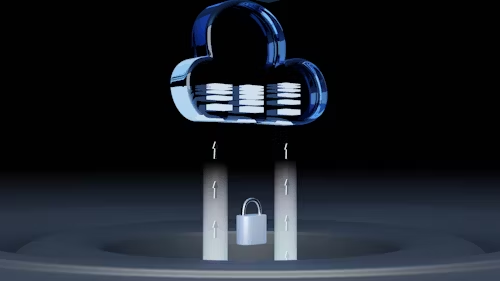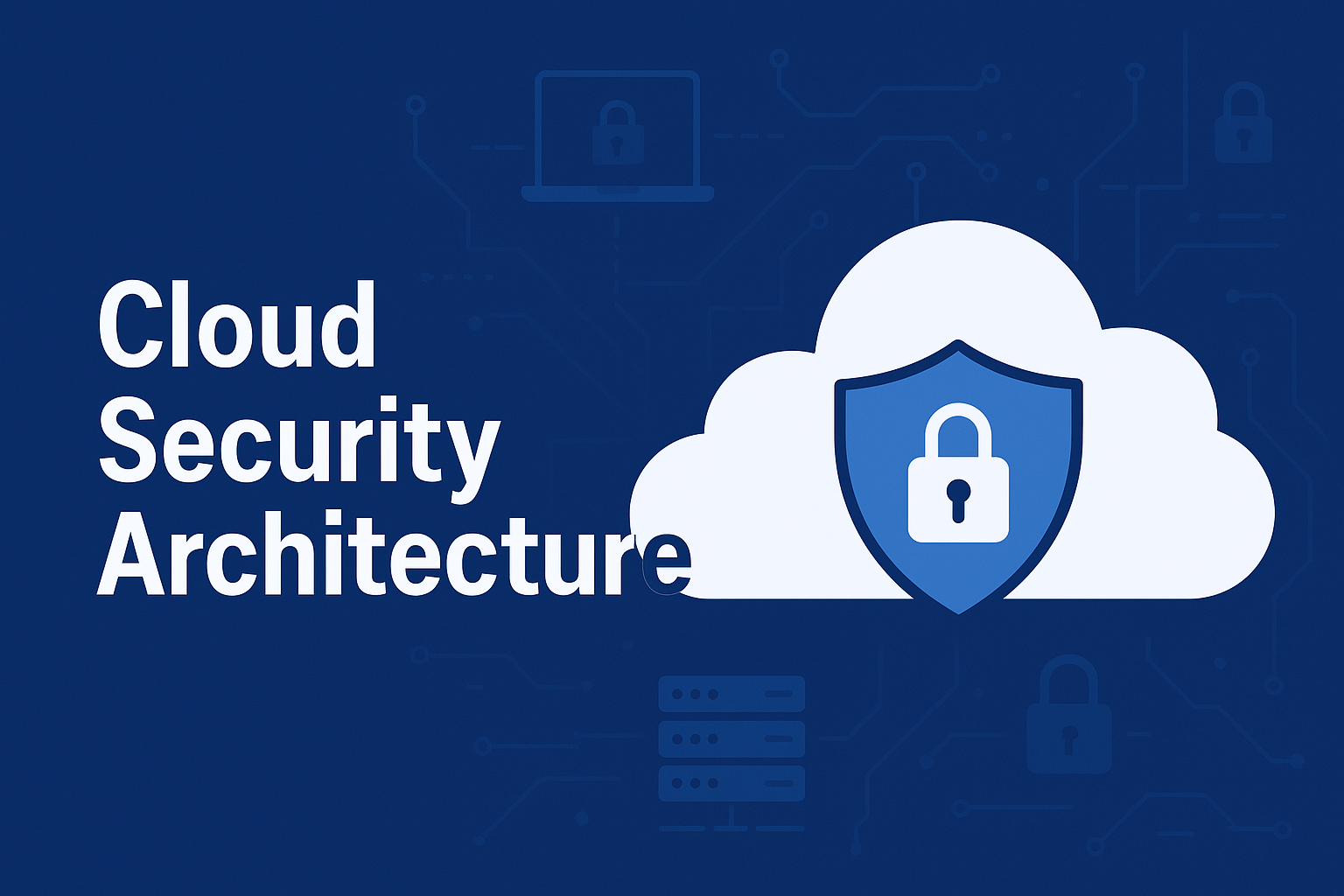cloud computing has revolutionized the way individuals and businesses store, access, and manage data. From personal photos to critical business information, much of what we rely on daily exists in the cloud. But with this convenience comes a serious concern: how safe is your data in the cloud?
This is where cloud security architecture comes in. Even if you’re not an IT expert, understanding the fundamentals of cloud security architecture can help you make informed decisions, protect sensitive data, and ensure your digital life or business remains secure.
In this article, we’ll explain cloud security architecture, explore its key components, explain why it matters, and provide actionable best practices for staying safe in the cloud.
What is Cloud Security Architecture?
Cloud security architecture serves as the essential blueprint for safeguarding data, applications, and systems in the cloud. Think of it like the security setup of a building with locks, alarms, and cameras; only in a digital environment.
Cloud systems rely on multiple layers of protection to prevent unauthorized access, data breaches, and cyberattacks. At its core, cloud security architecture focuses on four critical objectives: confidentiality, ensuring that sensitive information is only accessible to those authorized; integrity, protecting data from tampering or unauthorized changes; availability, keeping cloud services reliable and accessible whenever they are needed; and compliance, ensuring that systems meet legal and regulatory standards such as GDPR, HIPAA, or SOC 2.
Addressing these pillars, cloud security architecture provides a strong, structured, and proactive approach to safeguarding digital assets.
Why Cloud Security Architecture Matters
Cloud security is not just a technical requirement; it’s a necessity. Here’s why it matters:
1. Protecting Against Cybercrime
Cybercriminals are constantly on the lookout for vulnerable cloud systems. Without robust security architecture, sensitive information ranging from personal details to corporate data can be exposed to theft, ransomware attacks, and other malicious activity.
A well-designed cloud security framework acts as multiple layers of defense, making it far more difficult for attackers to exploit weaknesses and ensuring that critical data remains secure.
2. Avoiding Legal and Financial Consequences
The consequences of a data breach extend beyond lost information; they can include steep financial penalties, regulatory fines, and long-lasting reputational damage. Organizations are legally required to comply with regulations such as GDPR, HIPAA, and SOC 2, and failing to do so can have severe implications.
Cloud security architecture provides a structured approach to compliance, helping companies protect sensitive data while mitigating legal and financial risks.
3.Supporting Remote Work
With remote and hybrid work models becoming the norm, employees access cloud systems from multiple locations and devices, increasing potential security vulnerabilities. Cloud security architecture ensures that this access is controlled, monitored, and secured without compromising productivity.
Establishing secure protocols and access management, organizations can support a flexible workforce while keeping sensitive data protected at all times.
Key Components of Cloud Security Architecture
Cloud security is not about a single tool; it’s a multi-layered approach. Here’s a breakdown:
1. Identity and Access Management (IAM)
At the heart of cloud security lies Identity and Access Management (IAM), which controls who can access which resources within a cloud environment. IAM ensures that only authorized individuals can view or modify sensitive data, reducing the risk of accidental or malicious breaches.
For example, a marketing employee should never have access to payroll records. Common IAM tools include multi-factor authentication (MFA), single sign-on (SSO), and role-based access control (RBAC), all of which enforce strict access policies and provide a clear audit trail of user activity.
2. Data Encryption
Data encryption is a critical component that protects information both at rest and in transit. Encryption scrambles data into unreadable code, ensuring that even if it falls into the wrong hands, it cannot be deciphered without the appropriate key.
For instance, if an attacker manages to steal encrypted files, the data remains inaccessible and secure. Applying encryption consistently across storage systems, databases, and network transmissions is essential for maintaining confidentiality and trust.
3. Network Security
Network security protects cloud systems from unauthorized access and cyberattacks. This layer includes technologies like firewalls, which block unwanted or malicious traffic; virtual private networks (VPNs), which provide secure remote access; and intrusion detection systems (IDS), which monitor for unusual activity or suspicious behavior. Together, these measures create a fortified network perimeter that shields cloud resources from external threats.
4. Security Monitoring
Continuous security monitoring is essential for detecting threats in real-time and responding before they escalate. Monitoring tools track user activity, system behavior, and network traffic, generating alerts when anomalies occur, such as an unexpected login from a new location. This proactive approach enables administrators to respond quickly, preventing potential breaches and minimizing damage.
5. Compliance and Governance
Finally, cloud systems must adhere to legal and regulatory requirements through effective compliance and governance practices. This component ensures that organizations meet standards such as GDPR, HIPAA, or SOC 2, while also implementing internal policies for secure cloud usage.
Compliance frameworks provide structure, accountability, and auditing capabilities, helping businesses manage risk and build trust with customers and stakeholders.
Types of Cloud Security Architecture
The design of cloud security depends on the type of cloud deployment:

1. Public Cloud Security
Public clouds, such as AWS, Azure, and Google Cloud, are shared environments where multiple organizations use the same infrastructure. Security responsibilities are divided between the cloud provider and the user.
The provider is responsible for securing the physical infrastructure and implementing basic security measures, while the user is accountable for protecting their data, controlling access, and securing applications deployed in the cloud. This shared responsibility model requires careful coordination to ensure all aspects of security are properly addressed.
2. Private Cloud Security
Private clouds are dedicated exclusively to a single organization, offering more control over security configurations. Because the infrastructure is not shared, companies can customize security measures to meet their specific needs and compliance requirements.
However, this increased flexibility also requires a higher level of internal expertise and resources to manage and maintain security effectively. Organizations must proactively monitor and update private cloud systems to mitigate potential vulnerabilities.
3. Hybrid Cloud Security
Hybrid clouds combine the best of public and private cloud models, enabling organizations to leverage both environments based on their needs. However, this approach introduces additional complexity for security.
Cloud security architecture in a hybrid environment must ensure consistent protection across both public and private infrastructures while securely managing data transfer between them. Proper integration, unified policies, and continuous monitoring are essential to maintaining robust security in a hybrid setup.
Best Practices for Cloud Security Architecture
Even non-technical users can apply these best practices:
1. Strong Passwords and Multi-Factor Authentication (MFA)
One of the simplest yet most effective measures is using strong, unique passwords combined with multi-factor authentication (MFA). This two-layer approach ensures that even if a password is compromised, unauthorized users cannot gain access without the additional authentication factor, such as a text message code or authentication app.
2. Encrypt Sensitive Data
Encryption is essential for safeguarding data both at rest and in transit. Converting data into unreadable code that can only be deciphered with the correct key, encryption ensures that sensitive information remains protected even if intercepted by unauthorized parties. This applies to files stored in the cloud as well as data being transmitted across networks.
3. Regular Backups
Frequent and systematic data backups are critical for recovering from ransomware attacks, accidental deletions, or system failures. Maintaining multiple copies of important data in secure locations, organizations and individuals can minimize downtime and prevent permanent data loss.
4. Monitor Access and Activity
Continuous monitoring of user access and system activity helps detect anomalies or suspicious behavior before it escalates into a breach. Security tools can alert administrators to unusual login attempts, unauthorized changes, or access from unfamiliar locations, enabling swift and proactive responses.
5. Principle of Least Privilege
Following the principle of least privilege means granting users only the access necessary to perform their tasks. Limiting permissions reduces the risk of accidental or malicious data exposure and helps maintain tighter control over sensitive information.
6. Keep Systems Updated
Finally, regularly updating and patching systems is crucial to defend against known vulnerabilities. Cyber attackers often exploit outdated software to gain access, so timely updates ensure that cloud systems remain resilient against emerging threats.
Challenges in Cloud Security Architecture
Even with proper design, cloud security faces challenges:
- Complexity: One of the main challenges is complexity. Managing multiple tools, platforms, and security policies across cloud environments can quickly become overwhelming. Organizations often use a combination of public, private, and hybrid clouds, each with its own configurations and requirements, making comprehensive security management a demanding task.
- Human Error: Another significant risk comes from human error. Even minor misconfigurations or accidental oversights such as incorrect access permissions or improperly set security rules can expose sensitive data to unauthorized users. Continuous training and clear policies are critical to minimizing these risks.
- Compliance Requirements: Cloud security is also complicated by compliance requirements. Different regions and industries enforce varying regulations, such as GDPR in Europe or HIPAA in healthcare. Organizations must ensure their cloud systems meet these standards to avoid legal penalties and maintain customer trust.
- Evolving Threats: The threat area is constantly evolving. Cybercriminals continuously develop new attack methods, including ransomware, phishing, and advanced persistent threats. Cloud security architecture must be adaptable, leveraging continuous monitoring, threat intelligence, and updated defenses to stay ahead of emerging risks.
Conclusion
Cloud security architecture is the foundation of safe cloud computing. It combines multiple layers of protection; identity management, encryption, network security, monitoring, and compliance to keep data secure.
Whether you’re an individual storing personal files or a business handling sensitive information, understanding cloud security architecture is essential in today’s digital sector.
With proper planning and implementation, you can enjoy the convenience and flexibility of cloud computing without compromising on safety.

